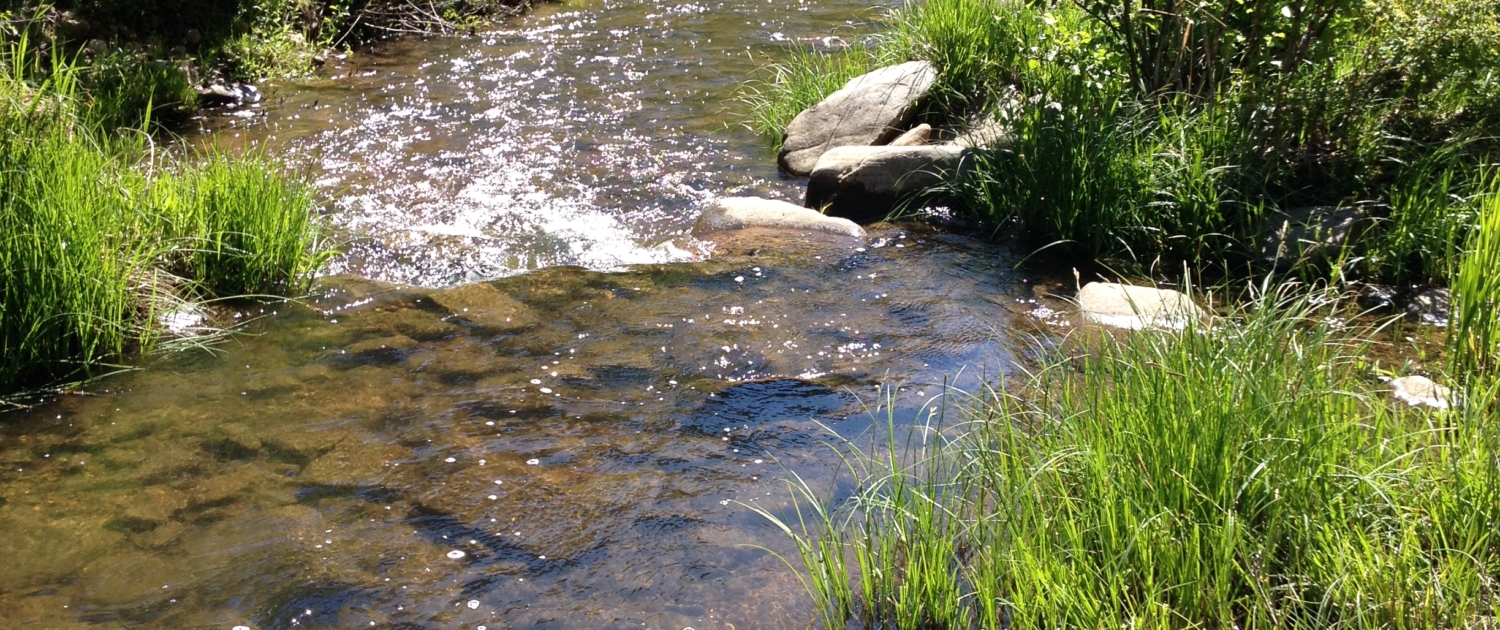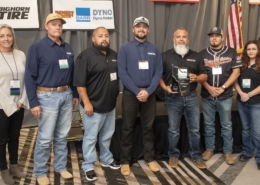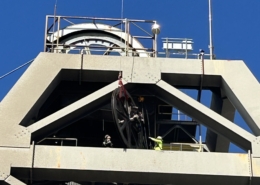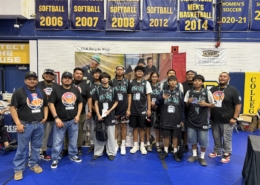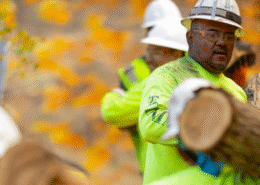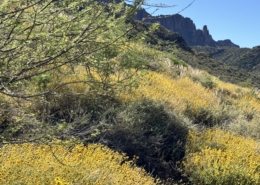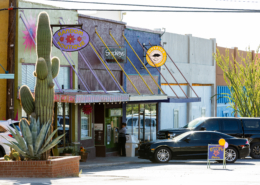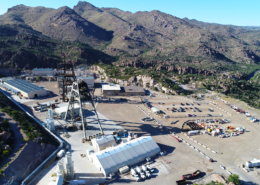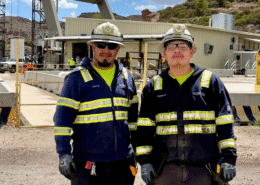Land Exchange
To safely develop the Resolution Copper deposit and deliver long-term economic and social benefits to the people of Arizona, we need access to land on the site that is owned by the US government. The planned mining operations will directly impact this land.
In 2014, Congress passed federal land exchange legislation, which allows for the exchange of 2,422 acres of land above the copper deposit for 5,459 acres of Arizona land owned by Resolution Copper that will become public.
Resolution Copper is permitting one of the world’s largest untapped copper deposits in Arizona’s Copper Triangle. Once in operation, the mine could be one of the largest in the United States. The project will create thousands of jobs and bring important economic benefits to the region. And a central component is the Congressionally-approved land exchange between Resolution Copper and the federal government, which has been more than a decade in the making.
What is a land exchange?
A land exchange is a commonly used tool for managing federal lands. It involves transferring public land administered by a federal agency to another owner in exchange for other lands, through an open and transparent process. When complete, the title to the formerly federal lands is exchanged for the title to the private or state lands that are part of the exchange. Land exchanges may be administrated or legislated through approval by Congress. They serve the public interest in a variety of ways, including economic development.
What lands are being exchanged?
The Resolution Copper land exchange is crucial to developing and operating the safest and most efficient mine possible. Per final federal land surveys, it will transfer 2,422 acres from the Tonto National Forest into Resolution Copper’s ownership. In return, the company will transfer to the government 5,459 acres of conservation lands around Arizona. The National Forest lands near Superior are underlain and surrounded by current and historic mining operations and mining claims, while the lands offered for exchange by the company are located throughout Arizona, within existing National Forests or would become part of National Conservation Areas providing long-term conservation, habitat and cultural heritage protection as well as recreational opportunities.
What does the public get in return?
Input from the US Forest Service, Bureau of Land Management, Audubon and The Nature Conservancy, and others have identified the 5,459 acres of conservation lands that will become public in the land exchange.
When does the land exchange take place?
The USFS published the Final EIS in January 2021, triggering the land exchange approved by Congress under the Obama administration in 2014. The land exchange cannot occur until the U.S. Forest Service republishes the Final Environmental Impact Statement (FEIS) and completes the federal permitting process. In April 2025, the agency announced its intent to move forward, marking a key step toward finalizing the exchange.
How does the legislative process work?
Legislation to facilitate the land exchange between the Tonto National Forest and Resolution Copper passed with bipartisan support in December 2014 and was signed into law by President Obama. Championed by members of the Arizona Congressional delegation, the Southeast Arizona Land Exchange and Conservation Act is one of more than 80 land bills that were part of the National Defense Authorization Act (NDAA) in 2014.
Based on nearly a decade of feedback from a wide range of stakeholders – including the San Carlos Apache tribe, environmental groups and the Town of Superior – the bill included a number of important changes. Most notably:
Versions Pre-2013
- Reducing the total acres of land sought by Resolution Copper from approximately 3,025 acres to 2,400 acres;
Increasing the nonfederal conservation lands offered by Resolution Copper from approximately 4,800 acres to 5,400 acres; and - Increasing the acreage devoted to the protection of Apache Leap from approximately 560 acres to 800 acres.
Final approved in 2014
- Maintain public access to areas within Oak Flat, including the campground and recreational trails and climbing, after completion of the land exchange;
- Including 545 acres of federal lands within the Tonto National Forest for the Town of Superior, if requested; and
- Requiring that a full environmental impact statement (EIS) be completed and published before the Resolution Copper land transfer can take place.
Importantly, the bill carefully addressed the needs for conservation and cultural heritage protection, as well as economic development and jobs. This land exchange is the only congressionally mandated land exchange bill requiring a comprehensive environmental review under the National Environmental Policy Act.
What about culturally significant lands?
Resolution Copper is committed to responsibly and respectfully managing lands we own or acquire – especially those with cultural, historical and religious significance to Native Americans. Through the multi-year National Environmental Policy Act (NEPA) review process, the USFS has conducted comprehensive government-to-government consultations with Native American tribes of Arizona and New Mexico to find mutually acceptable measures to address their concerns and minimize any adverse effects resulting from mining-related activities on the Federal land conveyed to Resolution Copper.
A legally-binding programmatic agreement between the USFS, Resolution Copper and other federal and state regulatory agencies will also be executed, setting forth cultural heritage management obligations.
How is land valued?
The lands to be exchanged must be of equal value. For this reason, before completion of the land trade, all exchange parcels will go through an independent appraisal process directed, managed and approved Resolution Copper is committed to responsibly and respectfully managing lands we own or acquire – especially those with cultural, historical and religious significance to Native Americans. Through the multi-year National Environmental Policy Act (NEPA) review process, the USFS has conducted comprehensive government-to-government consultations with Native American tribes of Arizona and New Mexico to find mutually acceptable measures to address their concerns and minimize any adverse effects resulting from mining-related activities on the Federal land conveyed to Resolution Copper.
A legally-binding programmatic agreement between the USFS, Resolution Copper and other federal and state regulatory agencies will also be executed, setting forth cultural heritage management obligations.
by the US Secretary of Agriculture. The federal government will determine the properties’ market price according to well-documented United States Forest Service (USFS) standards. If the federal lands’ appraised value is determined to be higher than the Resolution Copper lands, the company will make up the difference, either through a payment to the US Treasury or donation of additional lands. Notably, the Act also creates a mechanism by which the federal land appraisal links to Resolution Copper’s future production. In the future, if the mine’s cumulative production of commercial quantities of minerals exceeds the amount estimated for the appraisal, Resolution Copper must make an annual adjustment payment to the United States.
The package of lands includes:
- 7B Ranch (Pinal County): 3,050 acres of riparian ecosystem along the Lower San Pedro River (7B Ranch), designated by the Nature Conservancy as one of the “Last Great Places on Earth” and home to several threatened and endangered bird species.
- Appleton Whittell (Santa Cruz County): A 940-acre tract adjacent to a congressionally established conservation area home to 200 bird species and 60 species of mammals.
- Cave Creek (Maricopa County): A 149-acre property that houses numerous archaeological sites, including petroglyphs, structure ruins, and grinding sites.
- East Clear Creek (Coconino County): 640 acres encompassing a notable fishery with sustained populations of both rainbow and brown trout; also home to big game such as Rocky Mountain elk, mule deer, turkey, and black bear.
- Dripping Springs (Gila County): 160 acres identified by national rock climbers as a significant rock-climbing resource.
- Turkey Creek (Gila County): 147 acres of abundant and diverse wildlife, including three native fish species.
- Tangle Creek (Yavapai County): 148 acres long known for rugged, scenic terrain and abundant hiking, camping and hunting opportunities.
- Apache Leap (Pinal County): Over 110 acres protecting cultural, recreational and scenic resources that are important to Superior, Native American tribes and the general public.
Special Protection For Apache Leap
Resolution Copper is already implementing the mutually agreed upon measures required in the land exchange bill with Native American tribes. We’ve designed our mine plan to protect Apache Leap, setting aside more than 800 acres of land to permanently protect this unique area as a Special Management Area (SMA) overseen by the USFS.
Specific measures were taken within the Apache Leap SMA NEPA process to accommodate tribal concerns regarding public access, grazing and other protections for culturally important locations. Monitoring of the area will continue throughout construction, operation, closure and reclamation of the proposed mine. Detailed monitoring reports will be publicly available through the USFS.
Maintaining Access To Oak Flat Campground
Mining operations and active mining claims have co-existed with outdoor recreation, ranching and cultural activities in the Oak Flat area for decades. The land exchange legislation specifically requires Resolution Copper to provide access to the surface of Oak Flat Campground to the public, including local communities and Native American tribes, to the maximum extent practicable, consistent with health and safety requirements. As a condition of the land exchange, Resolution Copper must provide an alternative campground site.
Resolution Copper is committed to being responsible stewards of the land, in order to protect and preserve Arizona’s unique environment, culture, and history.

